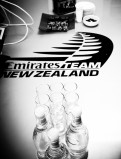Last month, the SEC announced new guidance in using traditional websites and social media channels as legitimate means for companies listed on US stock exchanges to communicate with investors and others.
Like Neville, I believe that announcement will have a far-reaching impact on how organizations communicate, not only listed companies (he has outlined some reasons why he thinks so).
I agree that this doesn’t spell the end of the press release. In fact, it could make the press release more important as companies seek to differentiate communications.
The SEC also made other moves this week – the recording is available – with SEC Chairman Christopher Cox presenting IDEA, a pretty good acronym for Interactive Data Electronic Applications. During the course of the next three years, IDEA will replace EDGAR, the SEC’s 1980s-era computer system for filing documents electronically.
In a first, anyone with an Internet connection – investors, financial analysts, anyone – will be able to more easily find, analyze and extract data and other financial information about US-listed companies held by the SEC. Neville points to the important underlying message in that this appears to give clear support for XBRL in financial reporting and information analysis
The SEC’s press release has the details and there is plenty of commentary and opinion. Hat tip to Neville for the post…





